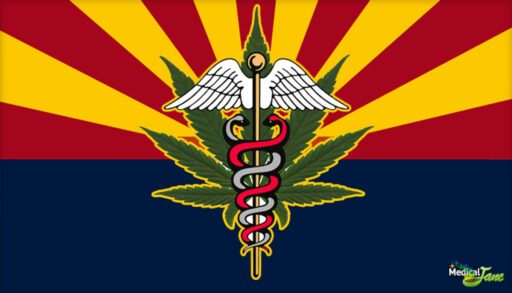The debate over whether marijuana should be legalized is multifaceted, encompassing public health concerns, economic interests, social justice issues, medical research, and cultural implications. This article delves into the various dimensions of the marijuana legalization debate, examining the potential benefits and drawbacks from different perspectives. We will explore how legalization could impact public health, the economy, the legal system, medical treatments, and society at large, drawing on recent research and expert commentary to provide a comprehensive overview.
Key Takeaways
- Legalizing marijuana may lead to public health benefits such as reduced tobacco consumption, but it also raises concerns about increased risk of mental health issues like schizophrenia.
- Economic advantages of marijuana legalization include potential revenue from sales and cost savings in law enforcement, but its impact on local and national economies remains contentious.
- Social and legal outcomes of legalization could result in shifts in attitudes and a decrease in criminalization, yet there are implications for youth access and the need for effective education.
- Medical marijuana presents therapeutic benefits for certain conditions, but it also brings up issues of dependency and abuse, necessitating a balanced comparison with prescription drugs.
- Marijuana’s cultural significance and historical context are important in the societal debate, where arguments for and against recreational use reflect broader issues in the war on drugs.
Public Health Implications of Marijuana Legalization

Reduction in Tobacco Consumption and Associated Benefits
The legalization of marijuana has sparked a significant public health discussion, particularly regarding its impact on tobacco consumption. Studies indicate a correlation between marijuana legalization and a decrease in tobacco use. This trend is not only unexpected but also carries potential life-saving implications.
While critics anticipated that marijuana legalization might increase tobacco smoking, research suggests the opposite effect.
For instance, one study highlights a 6 percent reduction in cigarette use among teenagers and a 12 percent decline in frequent smoking following the introduction of medical marijuana laws. The broader implications of this shift are profound, considering the lethal consequences of tobacco, which is responsible for approximately 150,000 lung cancer deaths in the United States annually.
Additionally, the substitution effect, where individuals opt for marijuana over alcohol, may contribute to a decrease in alcohol-related harms, including traffic deaths. Here’s a summary of the key findings:
- 6% decrease in teenage cigarette use post-medical marijuana law introduction
- 12% drop in frequent teen smoking
- 12% decrease in tobacco demand with recreational marijuana legalization
- Potential reduction in alcohol use and related traffic fatalities
These data points underscore the complex interplay between marijuana legalization and public health outcomes, suggesting that the benefits may extend beyond the direct effects on marijuana users.
Impact on Mental Health and Potential Risks
The debate surrounding marijuana legalization often includes concerns about its impact on mental health. The potential for addiction is a significant concern, as marijuana can lead to psychological dependence in some individuals. This may manifest as cravings, withdrawal symptoms, and challenges in ceasing use.
Another critical aspect is the negative impact on lung health. Chronic marijuana smoking is associated with lung conditions such as bronchitis and lung infections, especially when combined with tobacco.
While not all users experience severe side effects, the risks associated with marijuana use cannot be ignored, particularly for those with pre-existing mental health conditions.
Public health campaigns emphasize the importance of understanding these risks. For instance, messages like Know the Risks of Marijuana aim to educate the public on the potential mental health implications of cannabis use.
Changes in Usage Patterns Post-Legalization
Following the legalization of marijuana, a notable shift in usage patterns has emerged. Adult marijuana use has increased significantly, with studies indicating a rise in the number of days marijuana is used per month. This increase is not limited to adults; there has also been a slight uptick in adolescent initiation of marijuana use.
The nuances of these changes are critical to understanding the broader implications of legalization on public health and societal norms.
Here is a summary of the observed changes in usage patterns:
- Adult usage: The baseline probability of an individual using marijuana in the last month rose by approximately 16% post-legalization.
- Frequency of use: The number of marijuana use days per month increased by 12 to 17%.
- Adolescent experimentation: There was a 5 to 6% increase in the probability of adolescents initiating marijuana use in the last year.
These statistics suggest that legalization may lead to increased consumption and a potential rise in co-use with other substances, such as alcohol, which could have significant health care and productivity implications.
Economic Considerations in the Legalization Debate

Potential Revenue from Legalized Marijuana Sales
The debate over marijuana legalization often highlights the potential economic benefits that could arise from a regulated market. One of the most significant advantages is the generation of tax revenue. States that have legalized marijuana have seen a substantial increase in their tax income, which can be allocated to various public services and infrastructure projects.
- Job creation is another critical aspect, with the marijuana industry providing a range of employment opportunities, from cultivation to retail.
- Investment opportunities emerge as the industry grows, attracting both individual and institutional investors.
- Real estate markets also benefit, with increased demand for spaces to grow, process, and sell marijuana products.
The introduction of a legal marijuana industry can lead to a ripple effect of economic growth, impacting personal income and overall output positively.
The table below provides a snapshot of the economic impact in states where marijuana has been legalized:
| Year | Tax Revenue ($M) | Jobs Created |
|---|---|---|
| 2017 | 250 | 125,000 |
| 2022 | 800 | 425,000 |
Note: The figures are illustrative and reflect the growth over time in a hypothetical state.
Cost Savings from Law Enforcement and Judicial Resources
The legalization of marijuana has the potential to yield significant cost savings in law enforcement and the judicial system. By reducing the number of marijuana-related arrests and prosecutions, resources can be reallocated to more pressing criminal issues.
- A study associates the opening of legal dispensaries with a 19% drop in overall crime.
- Legalization is linked to a 15-30% decrease in rapes and a 10-20% reduction in theft.
The shift away from criminalizing marijuana use allows for a more efficient use of law enforcement and judicial resources, focusing on serious and violent crimes.
The following table summarizes the impact of marijuana legalization on crime rates:
| Crime Type | Percentage Decrease |
|---|---|
| Overall Crime | 19% |
| Rapes | 15-30% |
| Theft | 10-20% |
These figures suggest not only a more focused and potentially effective criminal justice system but also the possibility of a safer society with fewer non-drug related crimes.
Impact on Local and National Economies
The legalization of marijuana carries significant economic implications for both local and national economies. The potential for generating substantial tax revenue is often cited as a major benefit. This revenue can be allocated to various public services, potentially leading to improved infrastructure, education, and healthcare systems.
However, the economic landscape is complex, and legalization may also introduce costs. For instance, increased healthcare expenditures and productivity loss due to higher rates of substance abuse could offset some financial gains. A study notes a 6 to 9 percent increase in adult binge drinking and a 15 to 22 percent rise in the probability of simultaneous use of marijuana and alcohol post-legalization, hinting at broader social and economic costs.
The interplay between increased revenue and potential social costs requires careful consideration to ensure that the economic benefits of legalization are not overshadowed by negative health and social outcomes.
Local economies may experience a shift as well, with new businesses emerging in the cannabis sector, creating jobs and stimulating economic growth. Yet, this must be balanced against the possibility of market saturation and the challenge of integrating the marijuana industry into the existing economic framework.
Social and Legal Outcomes of Marijuana Legalization

Shifts in Social Attitudes and Norms
The legalization of marijuana has been a catalyst for significant shifts in social attitudes and norms. Public opinion has increasingly favored legalization, reflecting a broader trend towards acceptance of cannabis use both medicinally and recreationally. This shift is evident across various demographics, though the degree of acceptance varies.
A notable change is the diversification of the audiences engaging in the marijuana discourse. Below is a list of audience groups that have shown interest in marijuana-related topics, based on web-scraped data:
- Public Officials
- Researchers
- Non-Profits & Faith-Based Organizations
- Young Adults
- Law Enforcement
- Racial & Ethnic Groups
- Families
- College Students
The evolving conversation around marijuana is not just limited to legal implications but also encompasses health, economic, and cultural dimensions. This multifaceted dialogue reflects the complexity of marijuana’s role in society and the need for informed policy-making.
As the conversation grows, so does the presence of marijuana-related content in media. A marijuana news website reports on various aspects of legalization, industry developments, and health benefits, indicating the substance’s permeation into mainstream discourse.
Legal System Adjustments and Decriminalization Effects
The legalization of marijuana brings with it a myriad of adjustments within the legal system, as well as notable decriminalization effects. The introduction of legal dispensaries has been linked to a significant reduction in crime rates, including violent offenses. Studies have shown that areas with legal dispensaries experience a 19% drop in overall crime, with specific decreases in rates of rape and theft ranging from 15 to 30% and 10 to 20% respectively.
The shift away from criminalization has also led to a reevaluation of law enforcement priorities, potentially freeing up resources for other critical areas of public safety.
However, the decriminalization of marijuana has not been without its challenges. There has been an observed increase in marijuana use and abuse among adults over 21, which raises concerns about the potential economic and social costs associated with increased healthcare expenditures and productivity loss. The complexity of these outcomes underscores the need for ongoing analysis and policy refinement post-legalization.
Crime Rate Reduction Post-Legalization
| Crime Type | % Reduction |
|---|---|
| Overall Crime | 19% |
| Rape | 15-30% |
| Theft | 10-20% |
Implications for Youth Access and Education
The legalization of marijuana brings forth significant concerns regarding youth access and the potential impact on their education. The ease of access to cannabis for adolescents may inadvertently increase following legalization, despite regulations aimed at restricting underage use. This is a critical area of focus as the developing brains of young people are more susceptible to the potential adverse effects of marijuana.
-
Adolescent cannabis use has been a subject of numerous studies, with mixed outcomes on whether legalization affects usage rates among teenagers.
-
Education systems may need to adapt their substance abuse curricula to address the changing legal landscape and ensure that students receive accurate and up-to-date information.
The challenge lies in balancing the protection of youth with the rights of adults in a society where marijuana is legal.
The following table outlines the audiences that may be particularly affected by marijuana legalization in terms of education and access:
| Audience | Concern Level |
|---|---|
| Adolescents as Audience | High |
| Young Adults as Audience | Moderate |
| People in Treatment | Moderate |
| People in Recovery | Low |
| General Public | Low |
Medical Marijuana: Weighing the Scientific Evidence

Therapeutic Benefits and Medical Applications
The discourse on medical marijuana often centers on its therapeutic benefits and the role it plays in treating various medical conditions. The compounds found in marijuana, particularly THC and CBD, have been shown to offer relief for symptoms such as chronic pain, nausea, and sleep disorders.
Medical marijuana’s efficacy extends to improving mood and overall quality of life for those with long-term health issues. This is not only a matter of physical comfort but also of psychological well-being, as patients report feeling more at ease and less burdened by their conditions.
The potential of medical marijuana extends beyond symptom relief, with ongoing research investigating its use in combating serious diseases like cancer and neurodegenerative disorders.
Here is a list of some recognized benefits of medical marijuana:
- Relieve pain
- Reduce nausea and vomiting from chemotherapy
- Promote sleep in people with chronic pain
- Improve mood and quality of life in people with health conditions
While the benefits are significant, it is crucial to consider the full spectrum of implications, including the potential for dependency and the need for proper regulation to ensure safety and efficacy.
Concerns Over Dependency and Abuse
While the therapeutic potential of medical marijuana is widely acknowledged, there is a parallel concern regarding the risk of dependency and abuse. The ease of access to marijuana for medicinal purposes can inadvertently lead to increased rates of misuse among certain populations.
The following table illustrates various substance abuse issues and their prevalence:
| Substance Abuse Issue | Number of Cases |
|---|---|
| Substance Abuse | 246 |
| Alcohol Abuse | 160 |
| Underage Drinking | 158 |
| Mental Illness | 101 |
| Binge Drinking | 81 |
| Suicide | 78 |
| Co-Occurring Disorders | 57 |
| Depression | 56 |
It is essential to consider the potential for marijuana to contribute to co-occurring disorders, particularly when it is used as a self-medication strategy without proper medical supervision.
Efforts to mitigate these risks include the development of low barrier models of care, which aim to improve access to treatment while reducing the stigma associated with substance use disorders. These models are crucial in addressing the gaps in access to care and engaging individuals in meaningful treatment pathways.
Comparative Analysis with Prescription Drugs
When considering the legalization of marijuana, it’s crucial to compare its use with that of prescription drugs, particularly for chronic non-cancer pain management. The objective of this study is to evaluate the comparative benefits and harms of opioids and cannabis for medical use.
- Opioids are commonly prescribed for pain but carry risks such as addiction and overdose.
- Cannabis has been suggested as a safer alternative with fewer side effects and a lower risk of dependency.
The potential for cannabis to reduce the reliance on opioids presents a compelling argument for its medical legalization.
However, it is essential to approach this comparison with caution. While cannabis may offer a safer profile, the long-term effects and efficacy require thorough investigation. The table below presents a comparison of substance-related risks and benefits:
| Substance | Risk of Addiction | Overdose Potential | Therapeutic Benefits |
|---|---|---|---|
| Opioids | High | High | Significant |
| Cannabis | Lower | Minimal | Moderate |
The Role of Marijuana in Society

Cultural Significance and Historical Context
Marijuana’s integration into society spans centuries, reflecting a complex tapestry of cultural, spiritual, and recreational significance. Marijuana holds significant cultural value in various communities worldwide, with its use documented in ancient rituals and continuing to influence social practices today. The plant’s historical context is as rich and varied as the societies that have embraced it.
- In many cultures, marijuana has been used for medicinal purposes, often intertwined with spiritual practices.
- The recreational use of marijuana has been a part of social gatherings and artistic expressions, contributing to its cultural fabric.
- Debates surrounding marijuana often reflect broader societal values and shifts, such as attitudes towards health, freedom, and law.
While the cultural significance of marijuana is evident, its role in society continues to evolve, shaped by legal, medical, and economic factors.
Marijuana’s Place in the War on Drugs
The War on Drugs has been a contentious issue, with marijuana often at the center of the debate. The criminalization of marijuana has historically been justified by claims of protecting public health, yet recent studies suggest that legalization may actually improve public health outcomes.
Legalization’s impact on crime has also been significant. The illicit markets fostered by marijuana prohibition have been associated with increased violence and gang activity. Evidence now indicates that legalization can lead to a reduction in non-drug related crimes, challenging the notion that marijuana’s illegality is beneficial for societal safety.
The role of marijuana in the War on Drugs is complex, with implications that extend beyond the legal realm into public health, economics, and social structures.
The federal stance on marijuana remains one of prohibition, despite a growing number of states legalizing its use for medical and recreational purposes. This dichotomy between federal and state law creates a landscape of uncertainty, affecting millions of users and the trajectory of marijuana policy in the United States.
Evaluating the Arguments for and Against Recreational Use
The debate over the legalization of marijuana for recreational use is complex, with arguments rooted in public health, economics, and social justice. The existing drug laws pertaining to marijuana make little sense, costing taxpayers in arrests, trials, and incarceration. Legalizing marijuana will legitimize an industry, potentially leading to job creation and economic growth.
On the public health front, concerns about the difficulty in distinguishing between medical and recreational use persist. The vagueness of state laws, especially regarding conditions like "chronic pain," complicates the separation of medical users from those seeking recreational benefits under the guise of medical need.
The implications of legalization on public health outcomes are significant, with studies indicating both positive and negative effects.
Economists have identified life-saving reductions in tobacco consumption as one of the key public health benefits of legalization. However, there are also risks, such as the potential for increased mental health issues, including schizophrenia and psychotic disorders.
- Pros: Economic growth, job creation, reduced law enforcement costs.
- Cons: Public health risks, difficulty in regulating use, potential increase in mental health issues.
Conclusion
The debate over the legalization of marijuana is multifaceted, encompassing considerations of public health, economic benefits, and social consequences. Proponents argue that legalization can lead to safer, regulated use and significant economic advantages, while detractors warn of potential increases in dependency and mental health risks. The evidence suggests that while there may be public health improvements, such as reductions in tobacco consumption, there is also a risk of increased marijuana use and related disorders among adults. As society continues to weigh the pros and cons, it is clear that any decision on marijuana legalization must be made with careful consideration of the complex tapestry of potential outcomes, informed by ongoing research and societal values.
Frequently Asked Questions
What are some potential public health benefits of legalizing marijuana?
Research suggests that legalizing marijuana can lead to life-saving reductions in tobacco consumption, as some individuals may substitute tobacco with cannabis. This could potentially lower tobacco-related health issues.
How might marijuana legalization impact mental health?
Legalization could lead to increased use and dependency, potentially exacerbating mental health issues such as schizophrenia and psychotic disorders in vulnerable individuals.
What economic benefits could arise from legalizing marijuana?
Legalization could generate significant revenue from sales, create jobs, and reduce costs associated with law enforcement and the judicial system related to marijuana offenses.
How could marijuana legalization affect local and national economies?
Beyond tax revenue, legalization could stimulate economic growth by creating a new industry, leading to increased investment, tourism, and ancillary business opportunities.
What are the implications of marijuana legalization on youth access and education?
Concerns exist that legalization may increase access and acceptance among youth, underscoring the need for effective education and regulation to prevent underage use.
How does marijuana compare with prescription drugs in terms of risks?
Marijuana is often considered to carry fewer risks than many prescription drugs, particularly in terms of overdose potential and side effects, but it may still lead to dependency and abuse.





